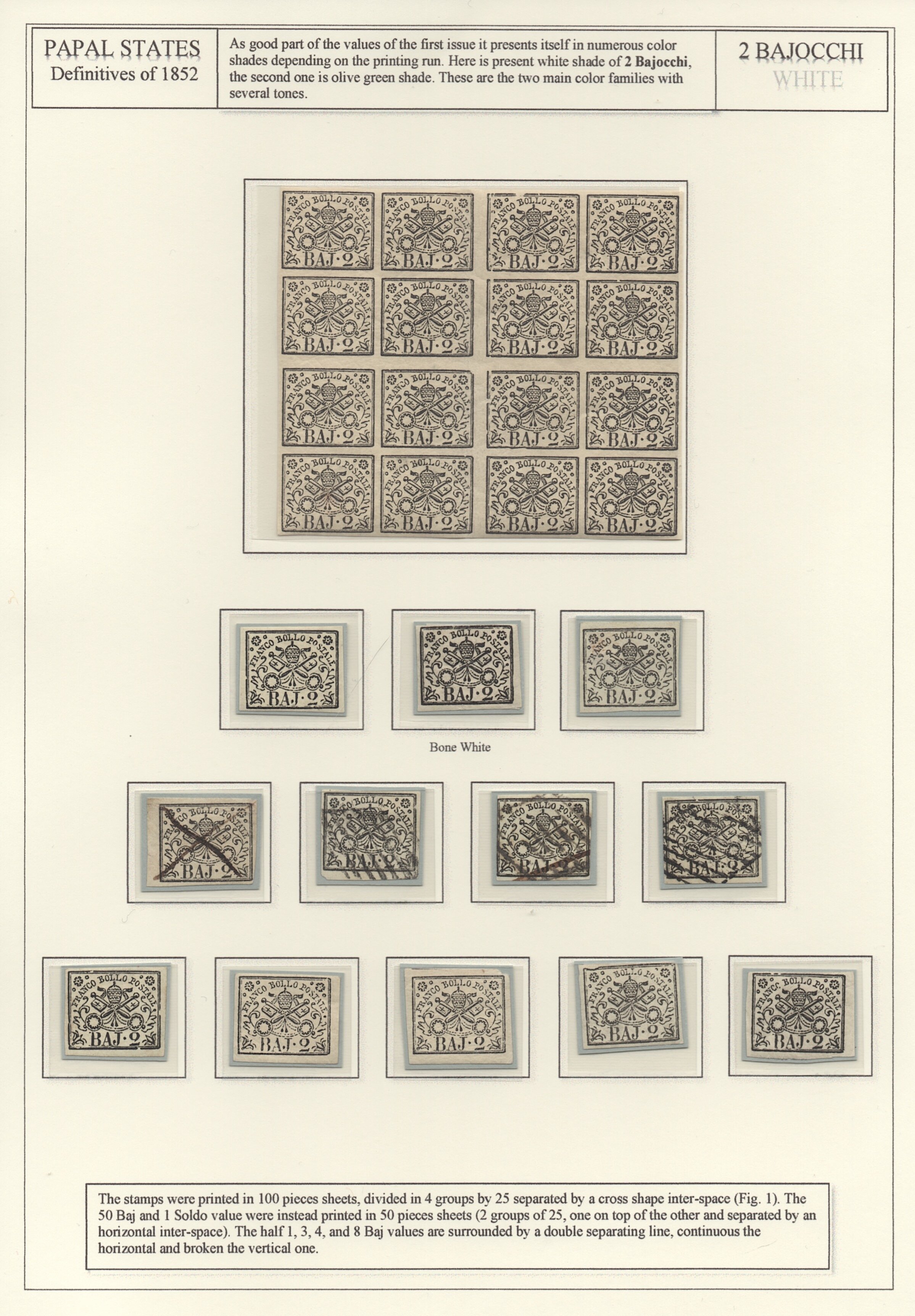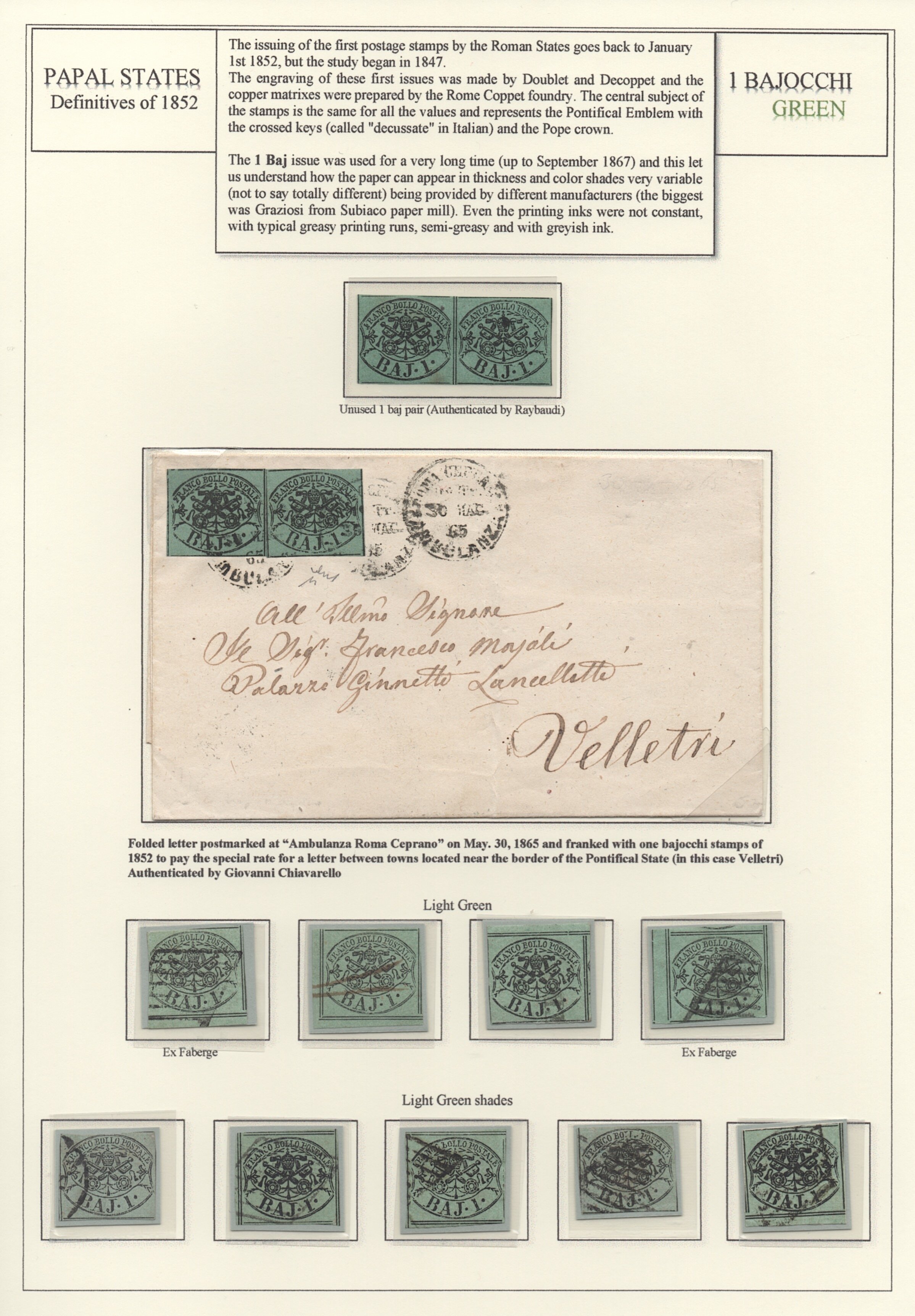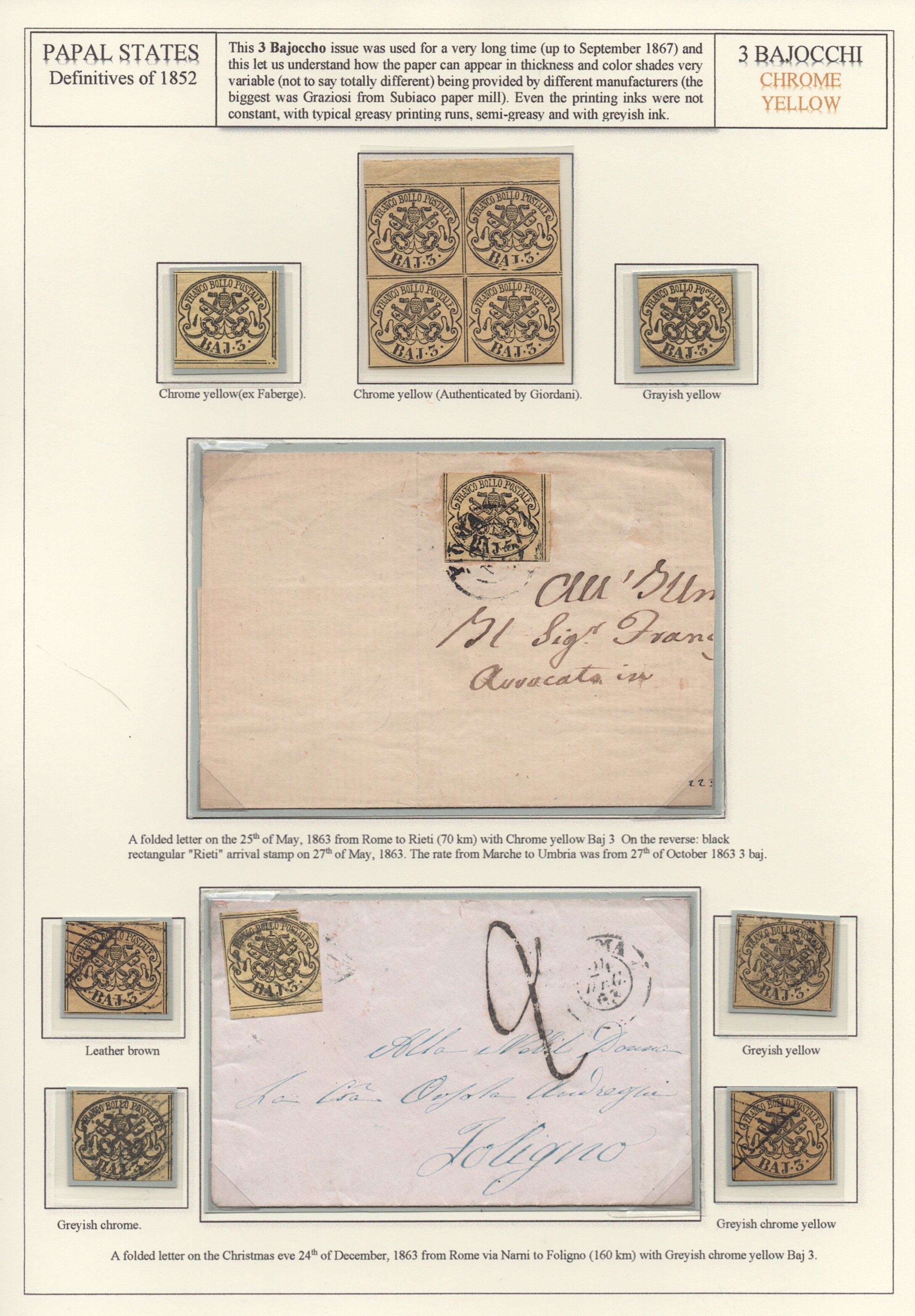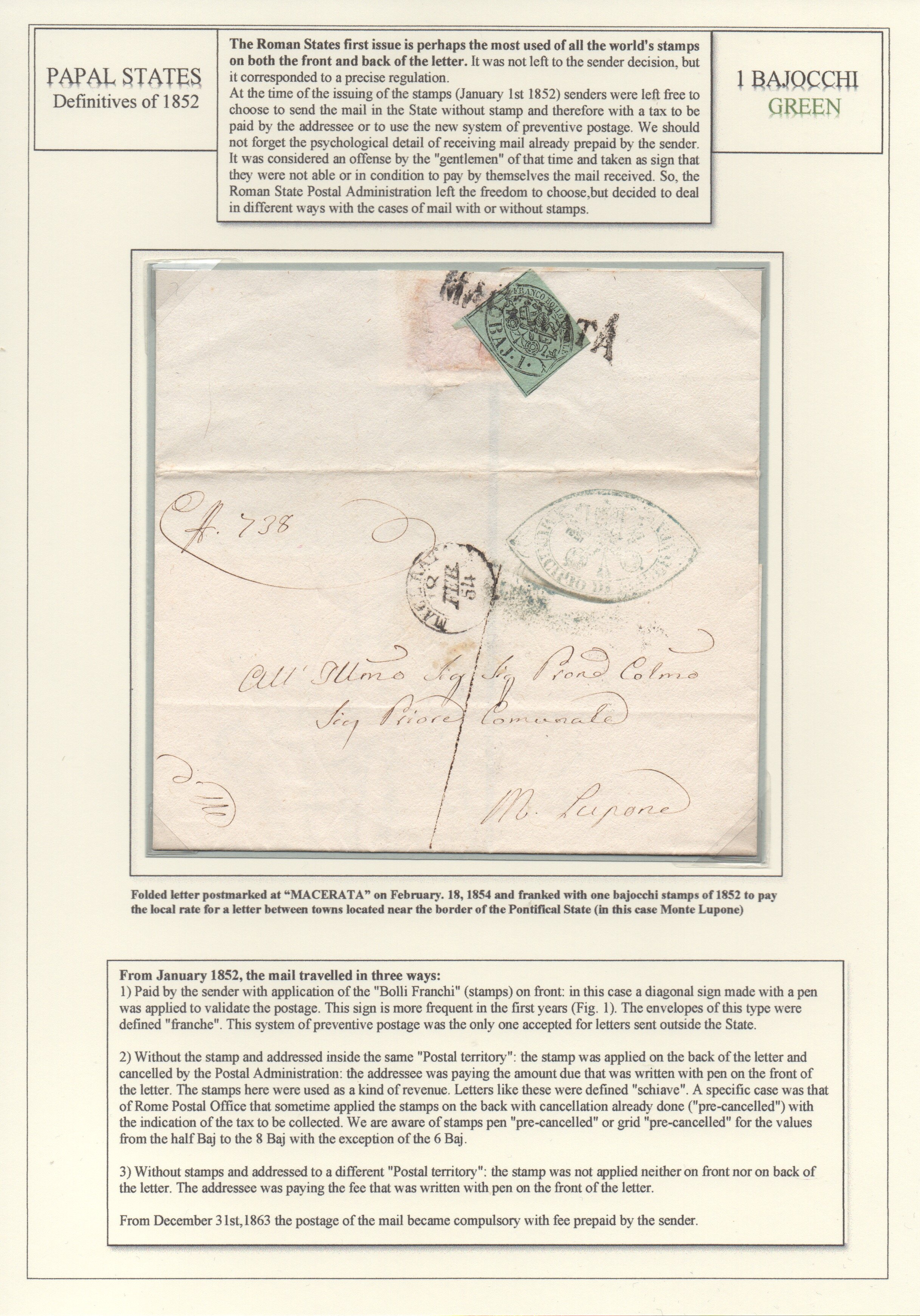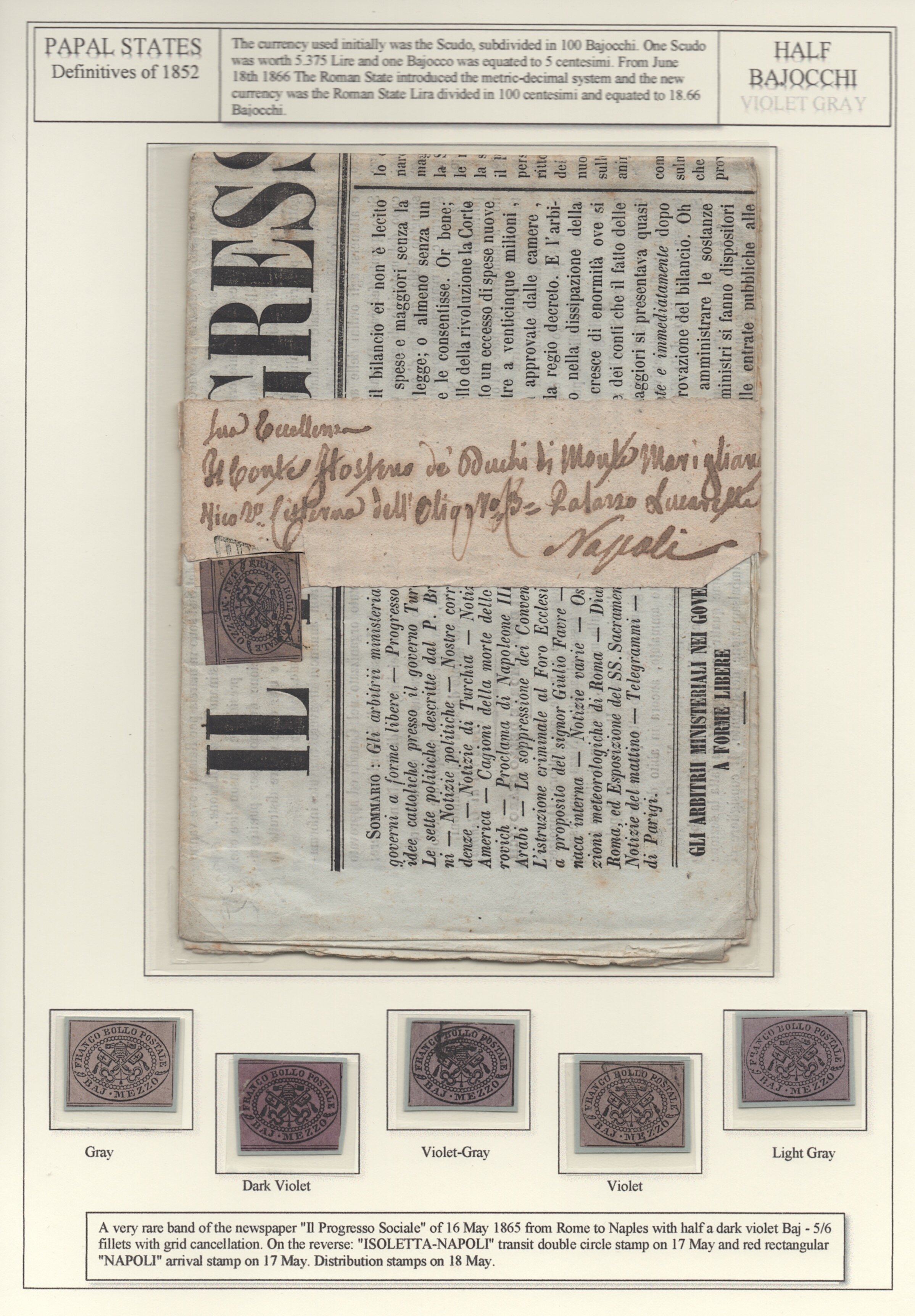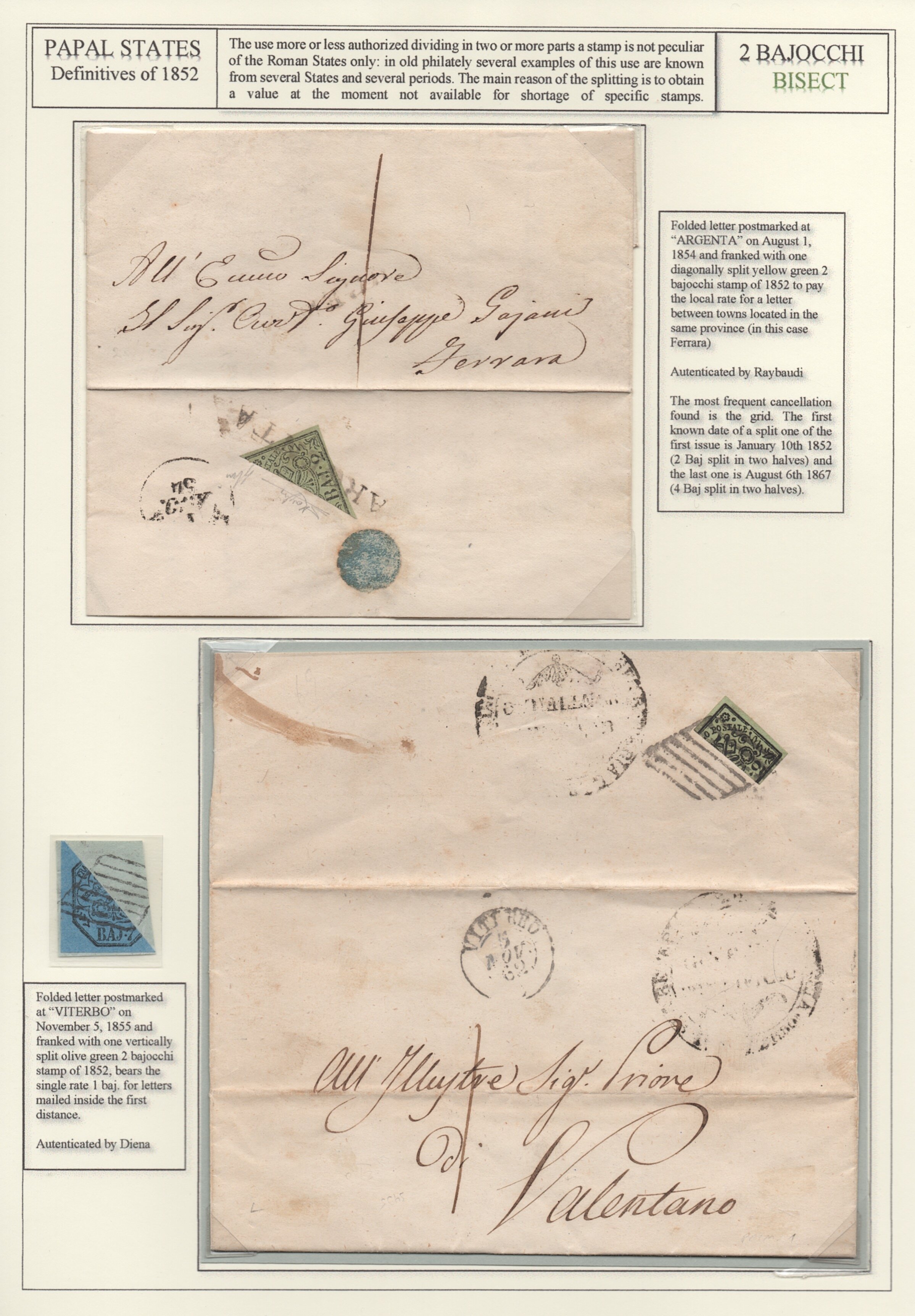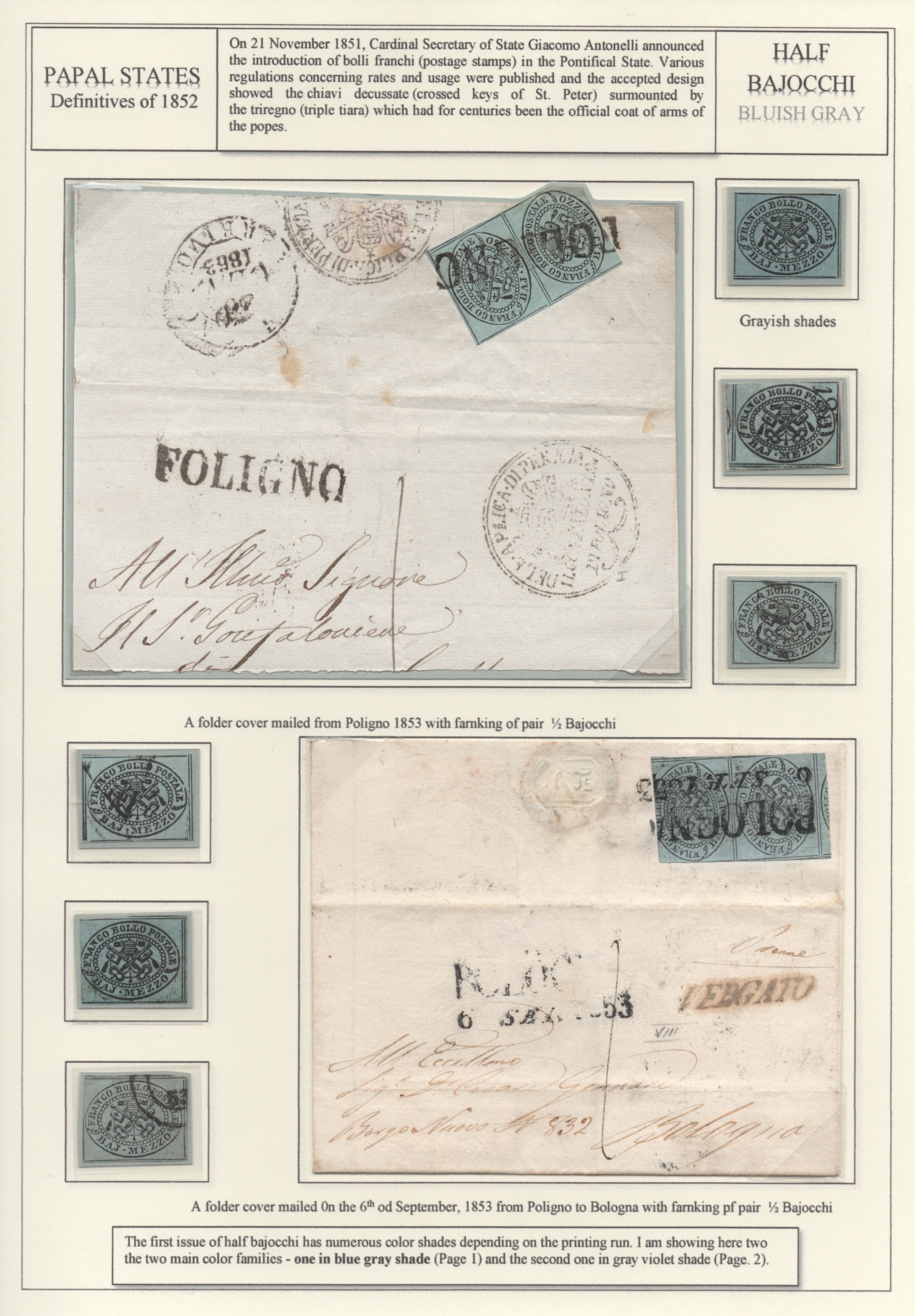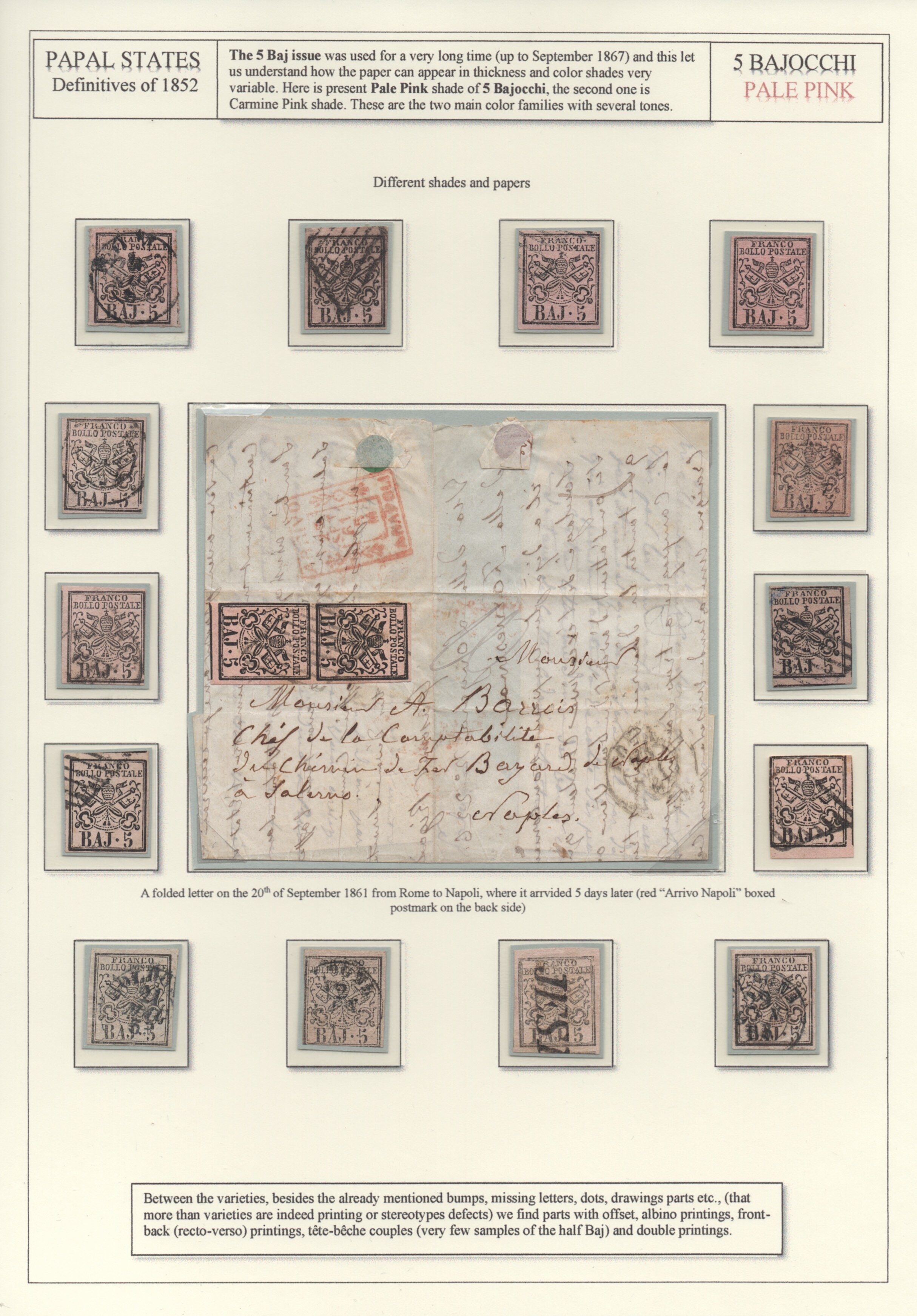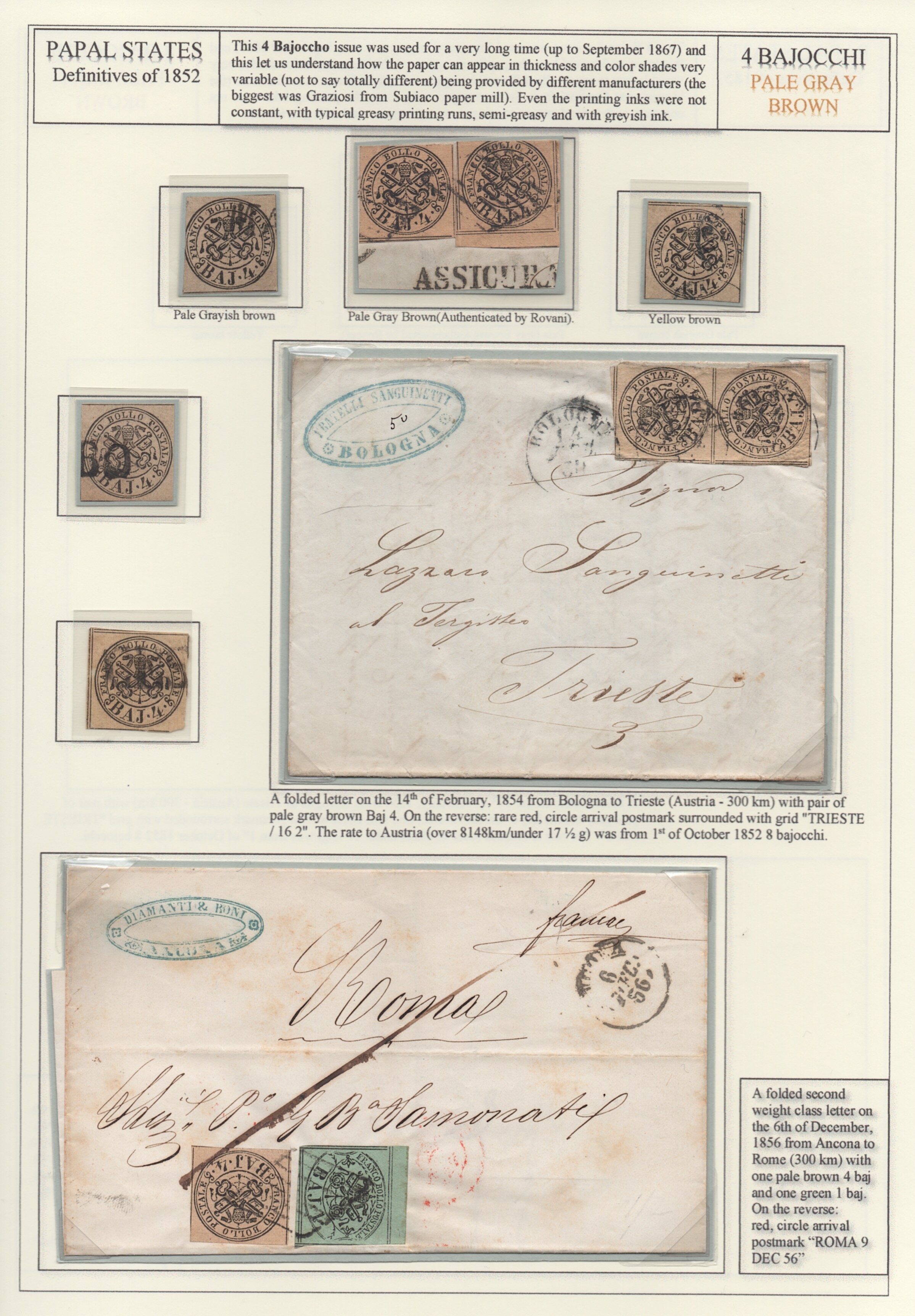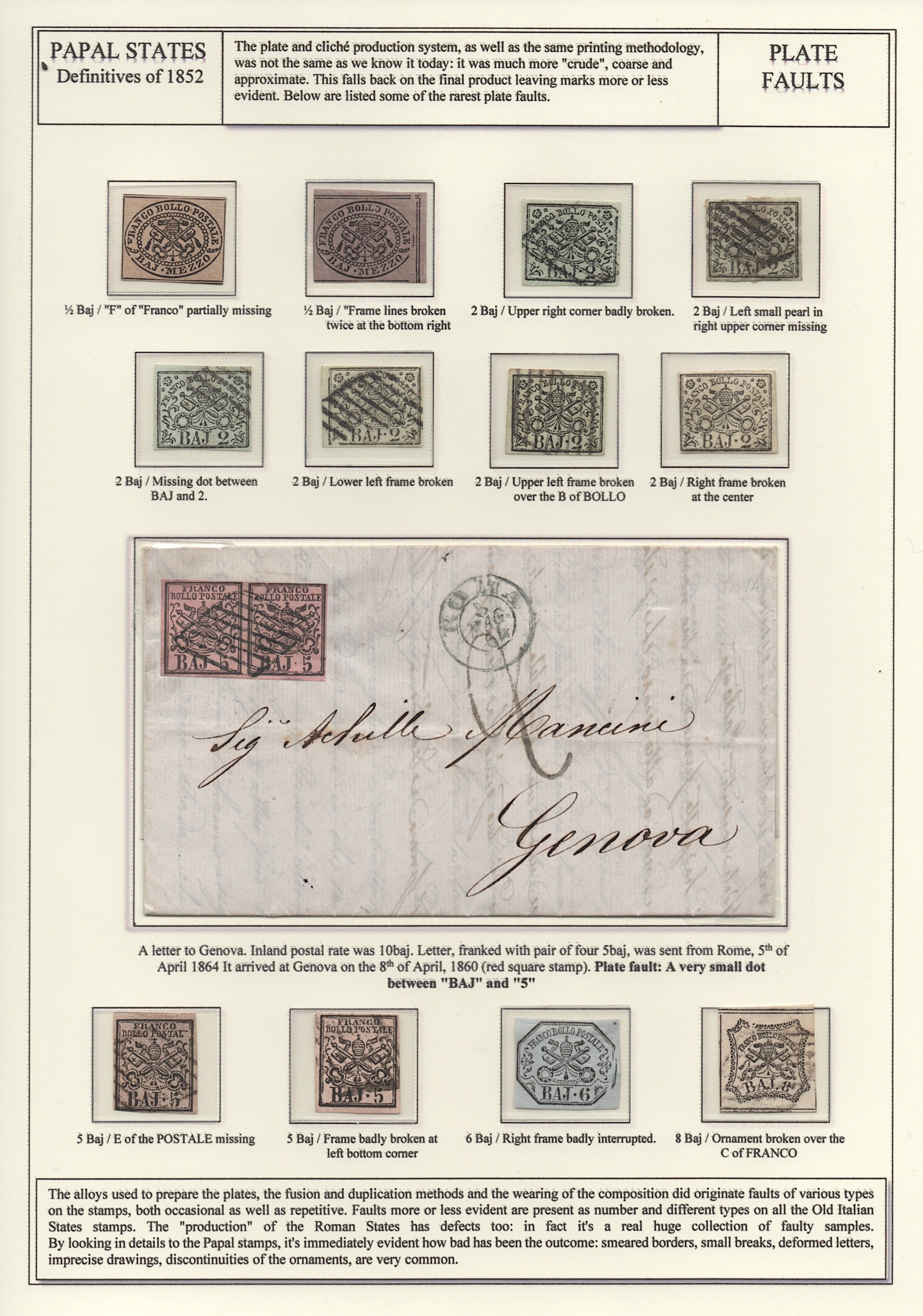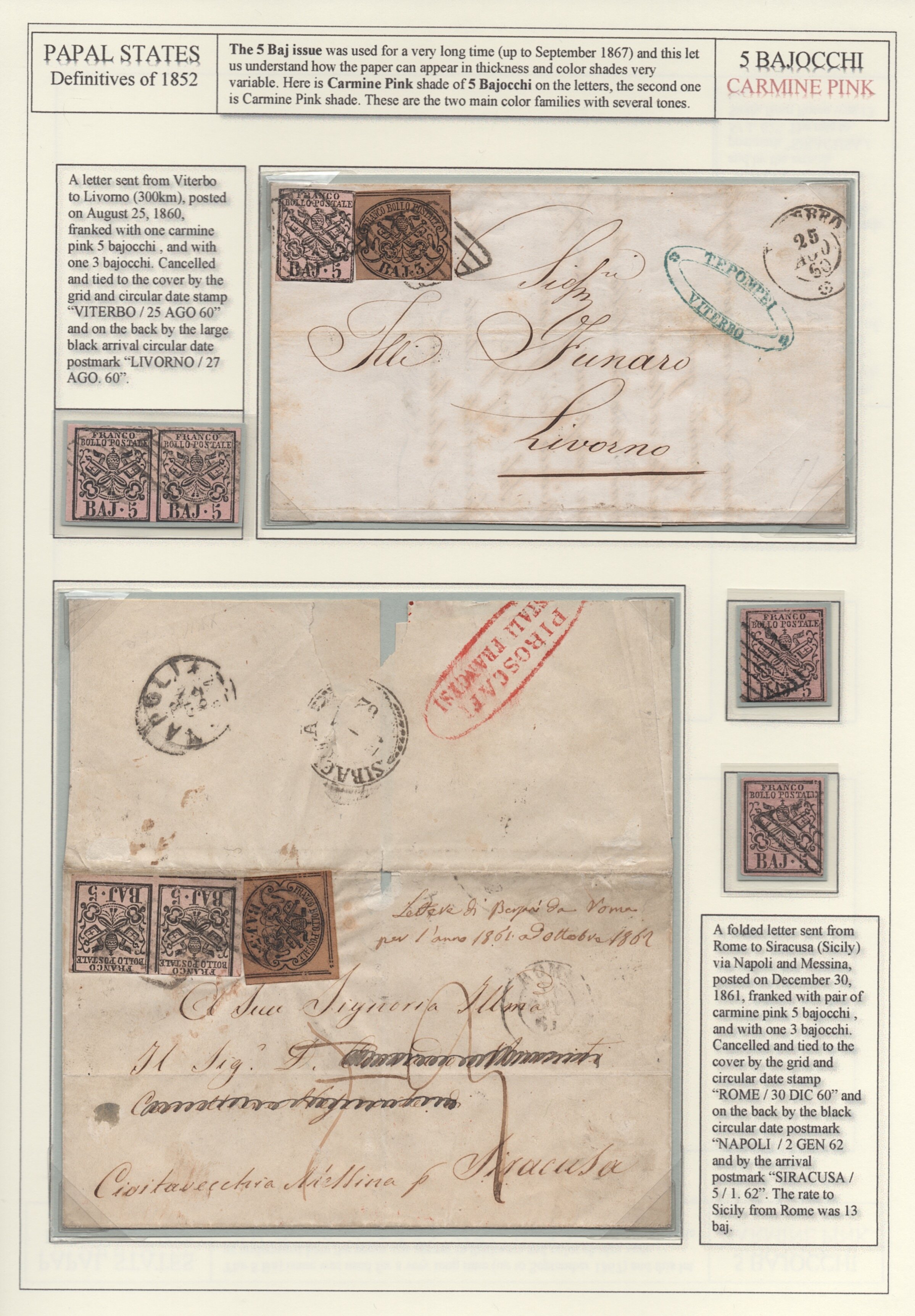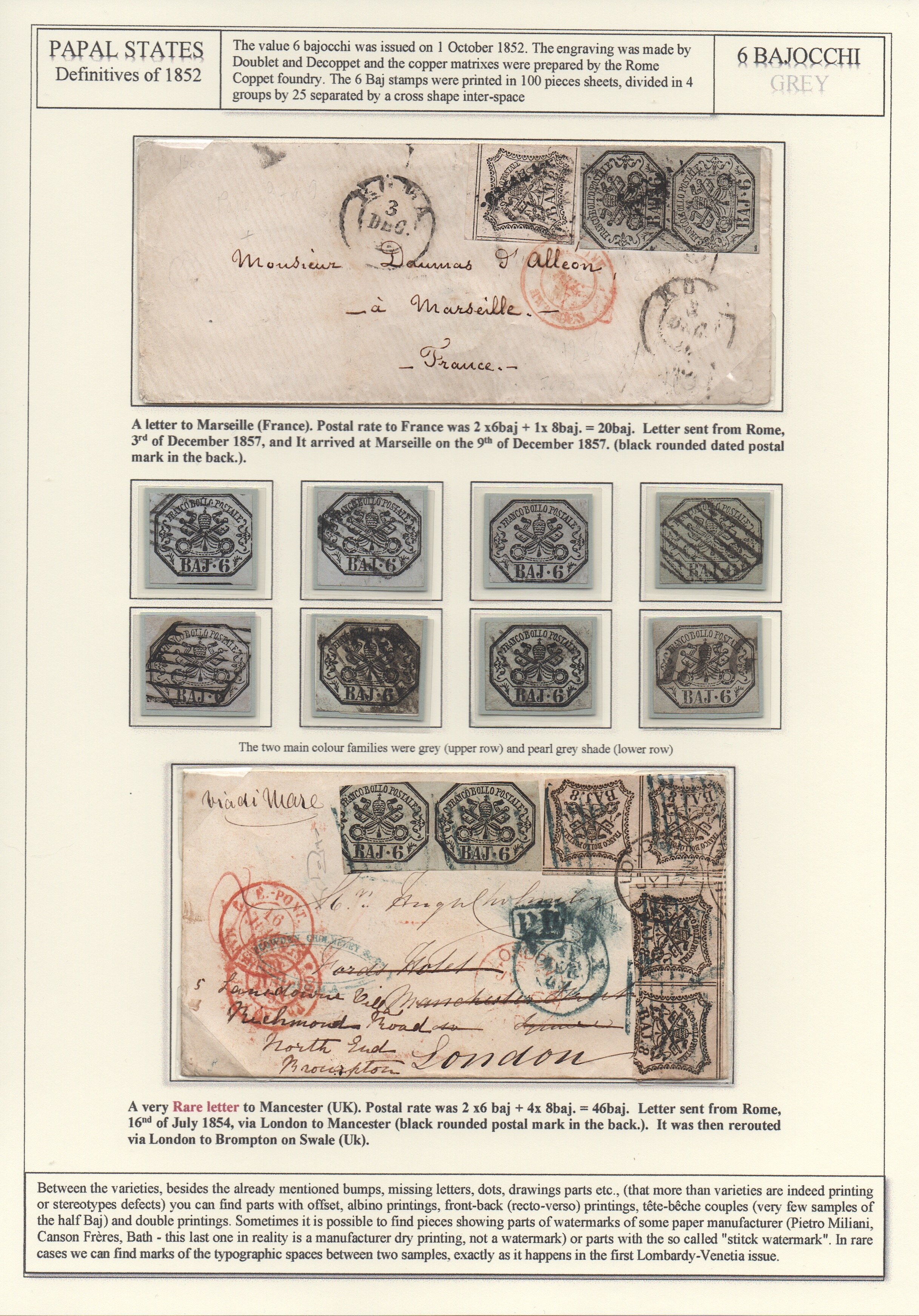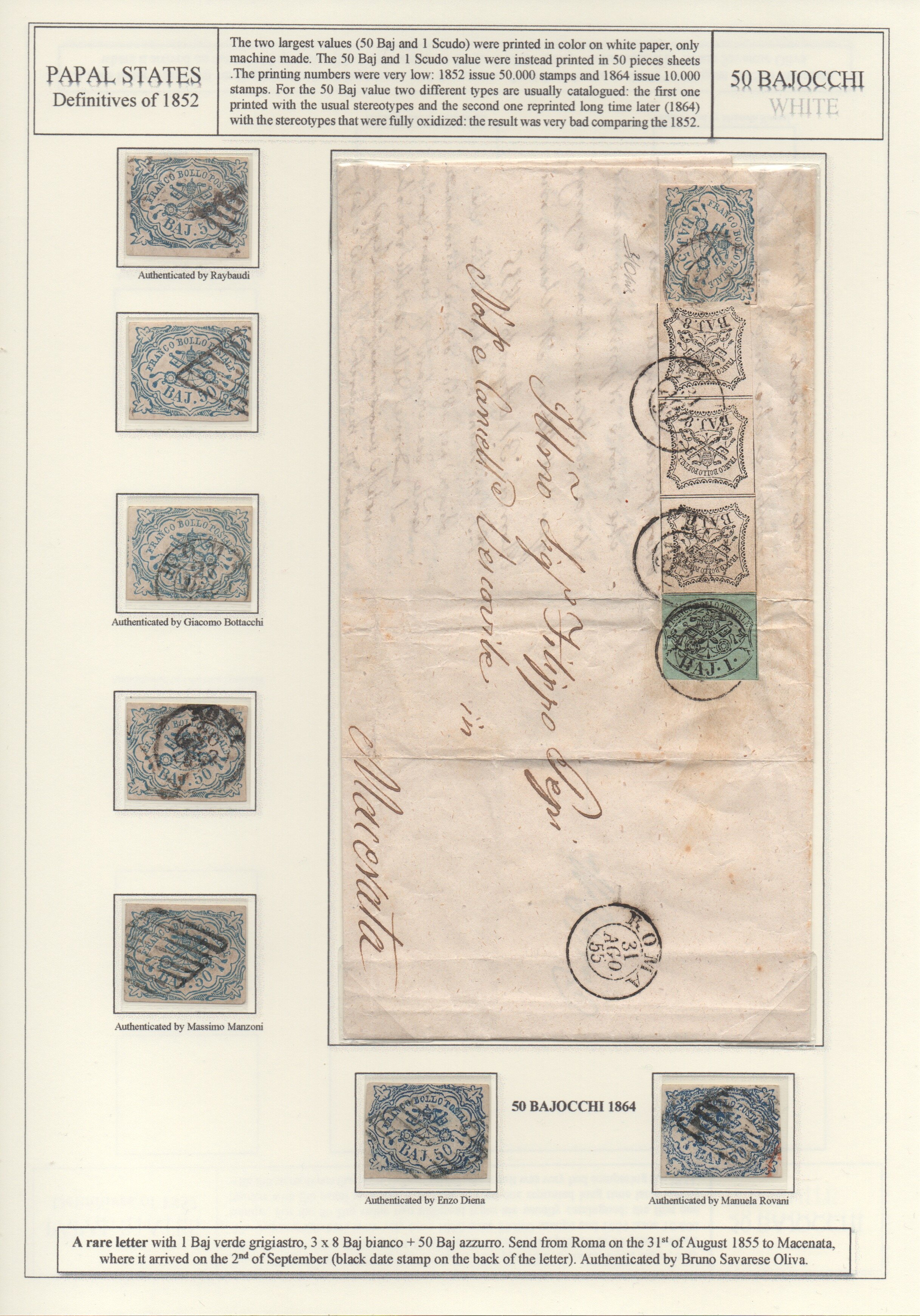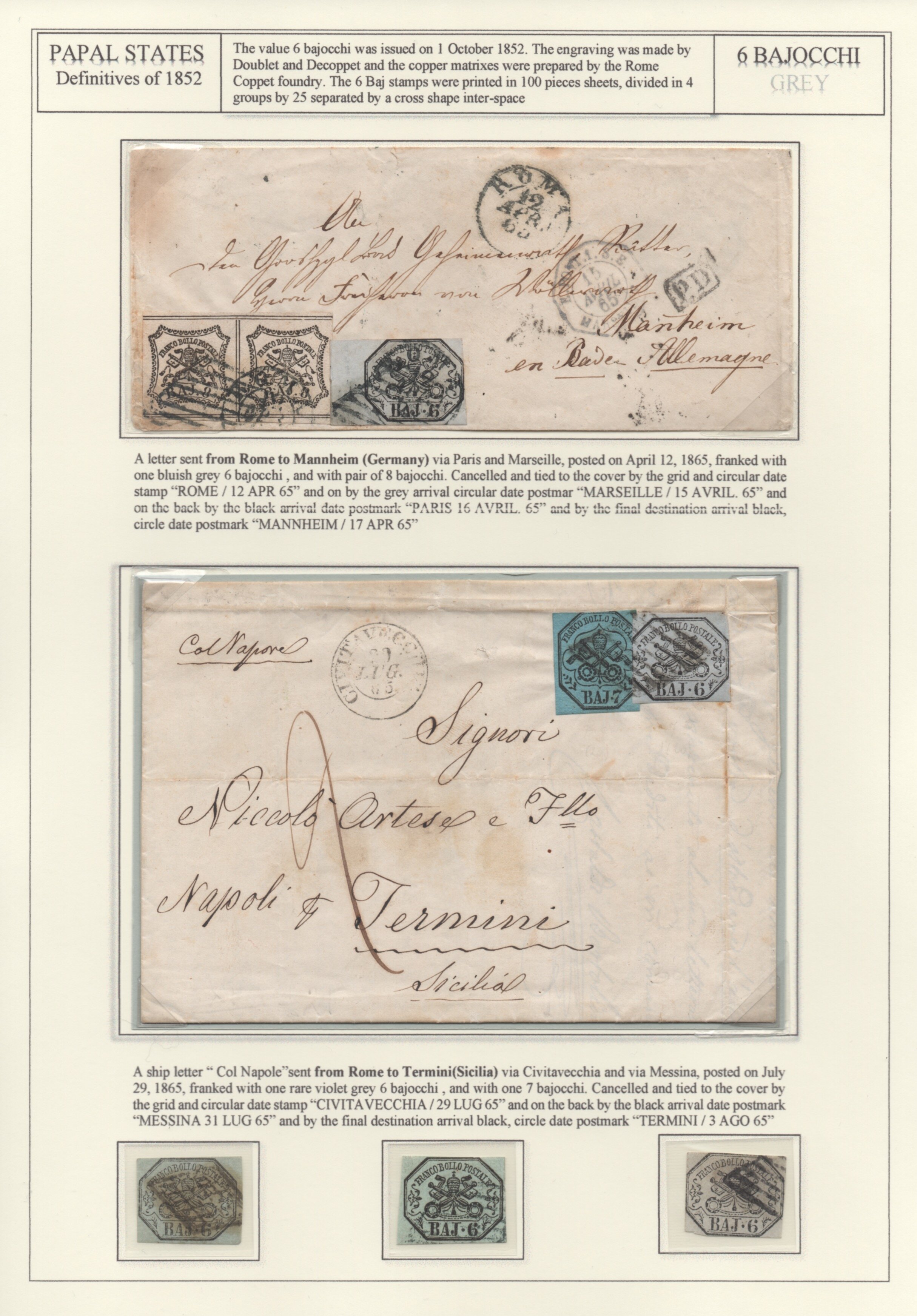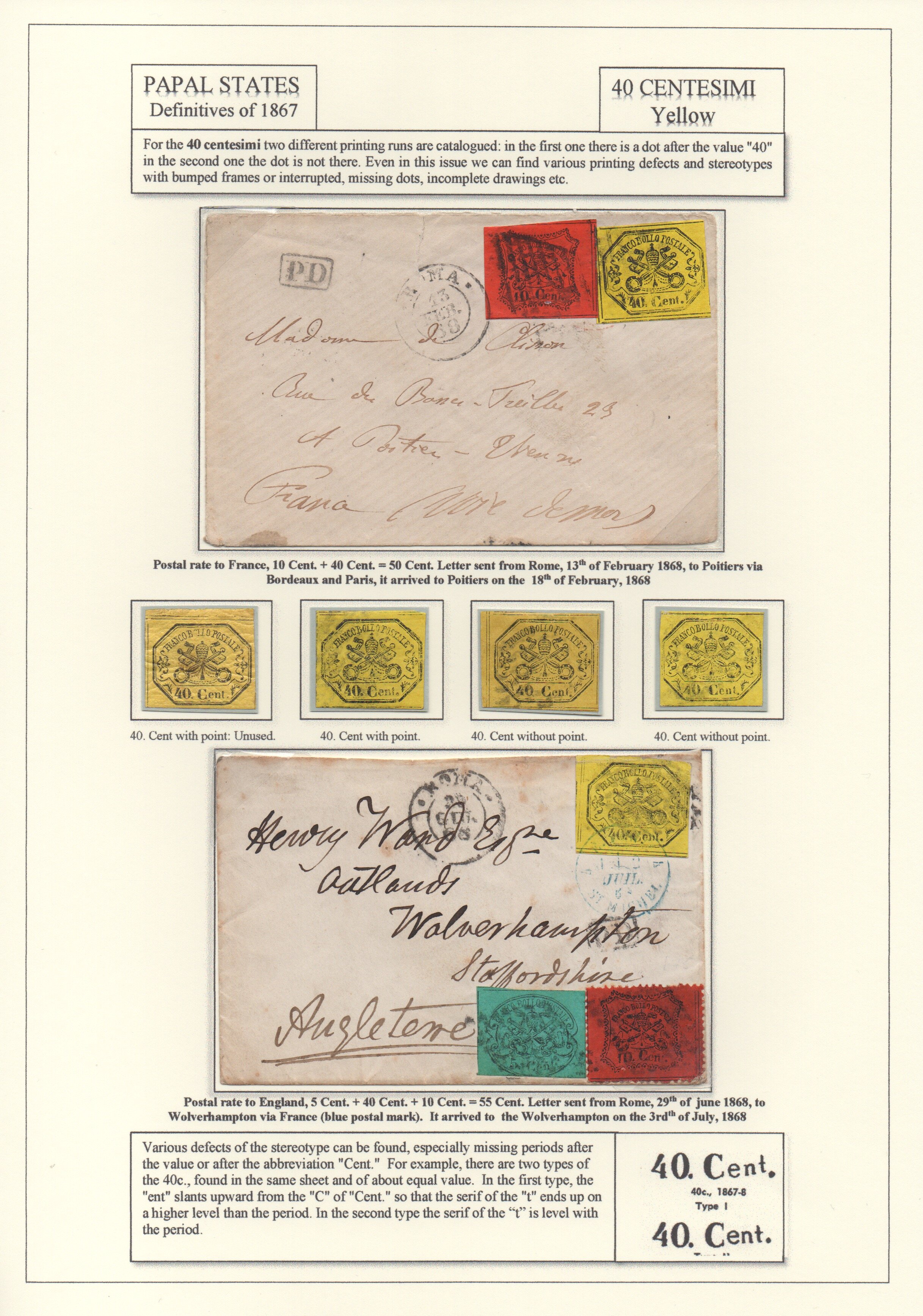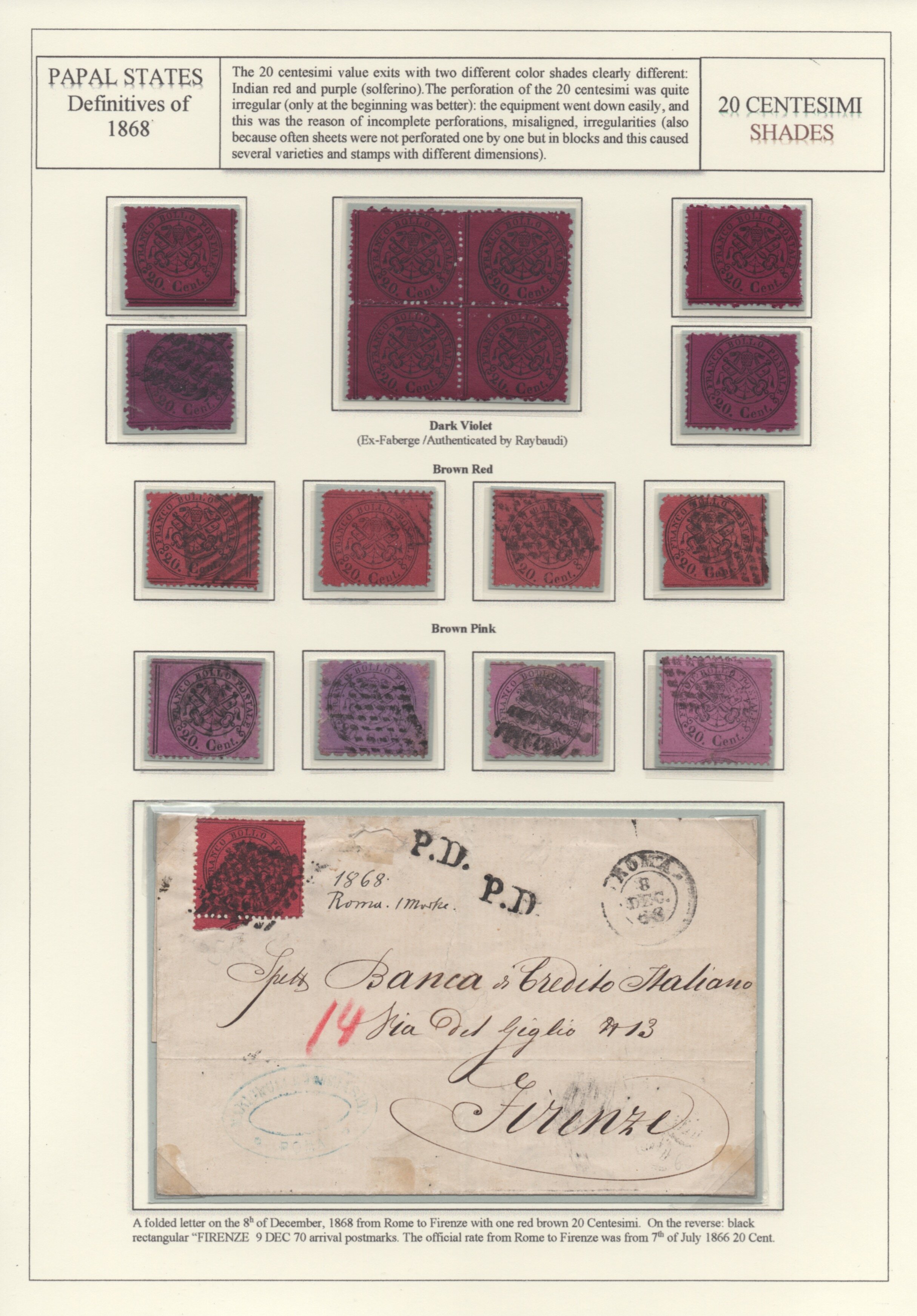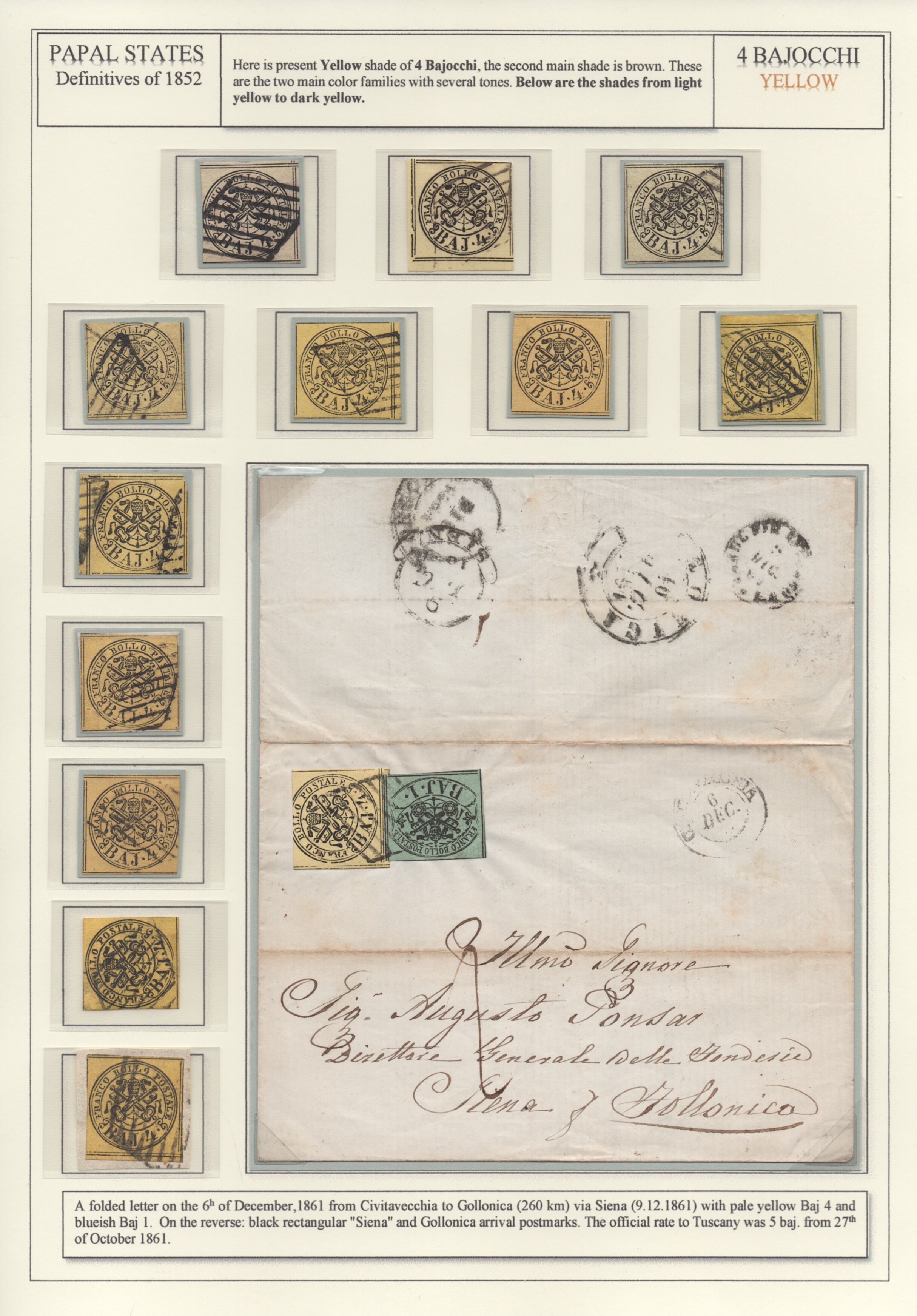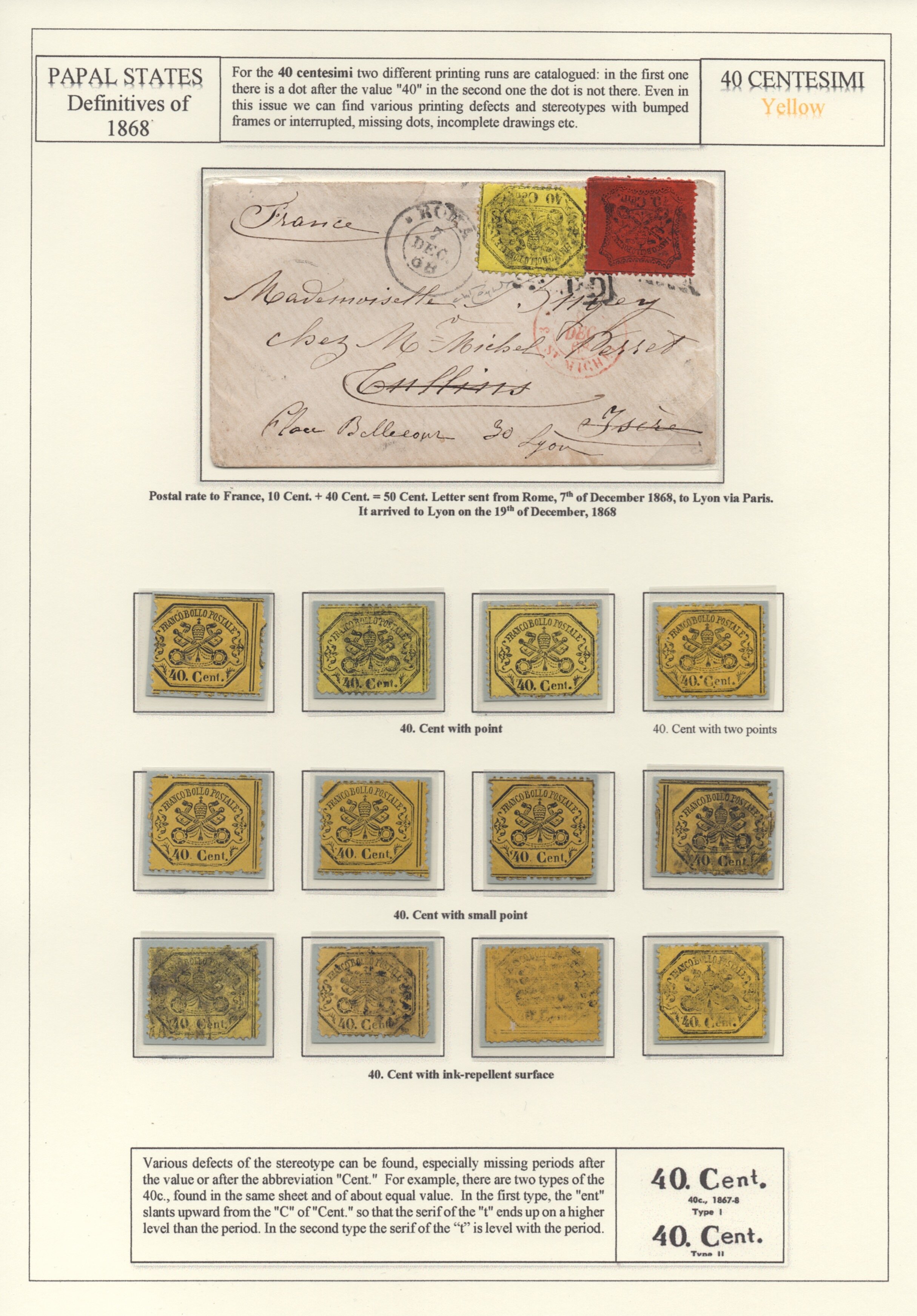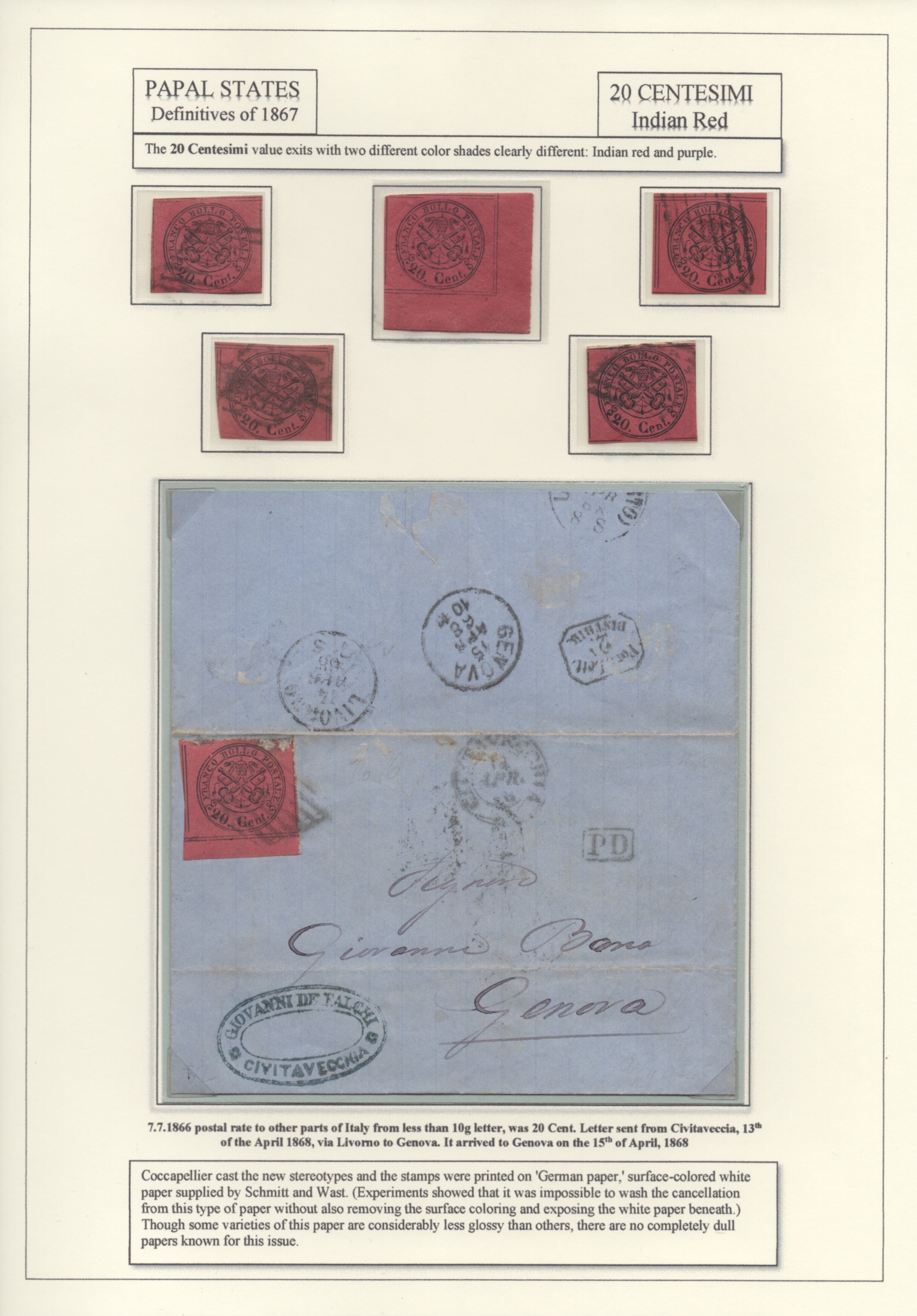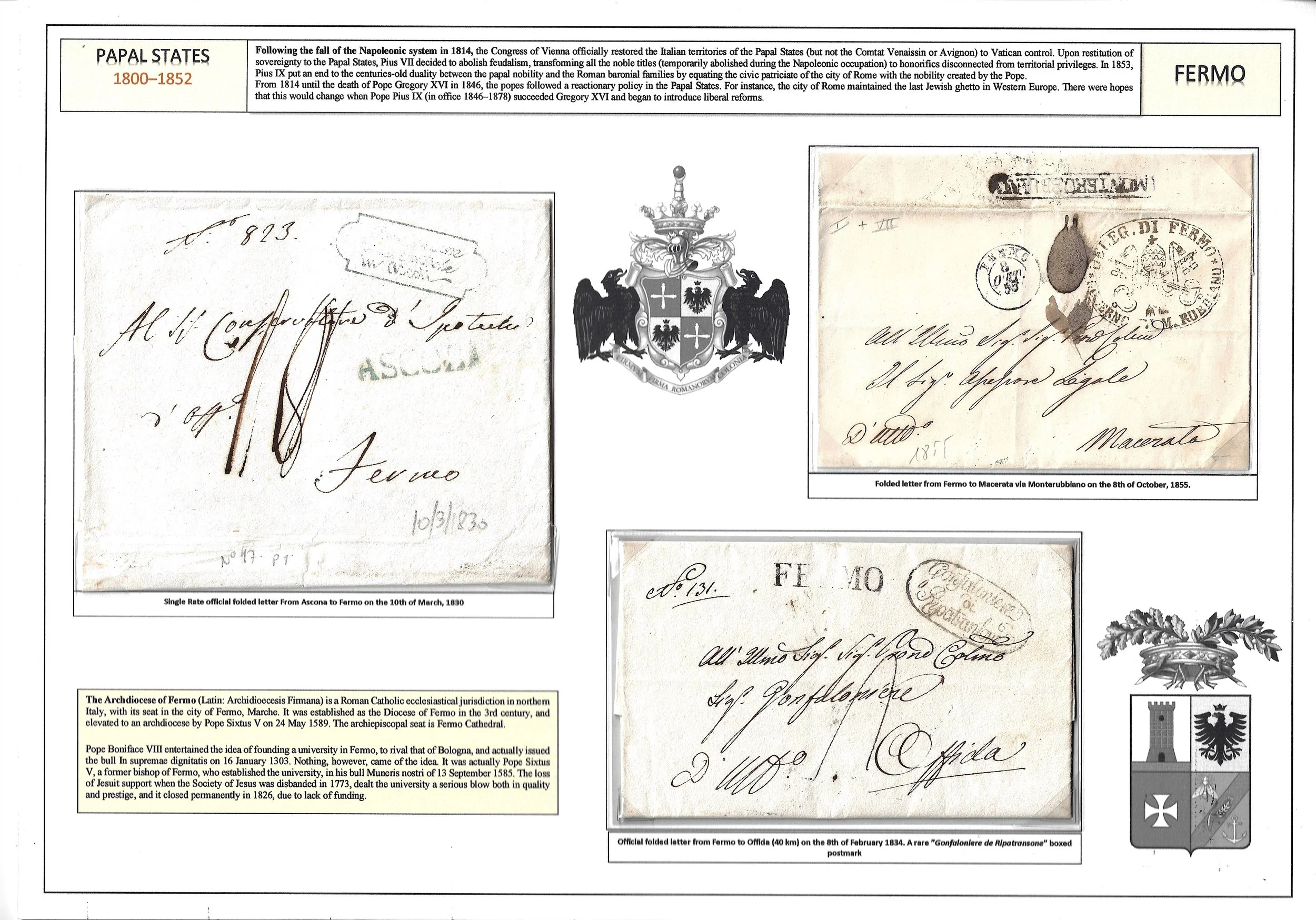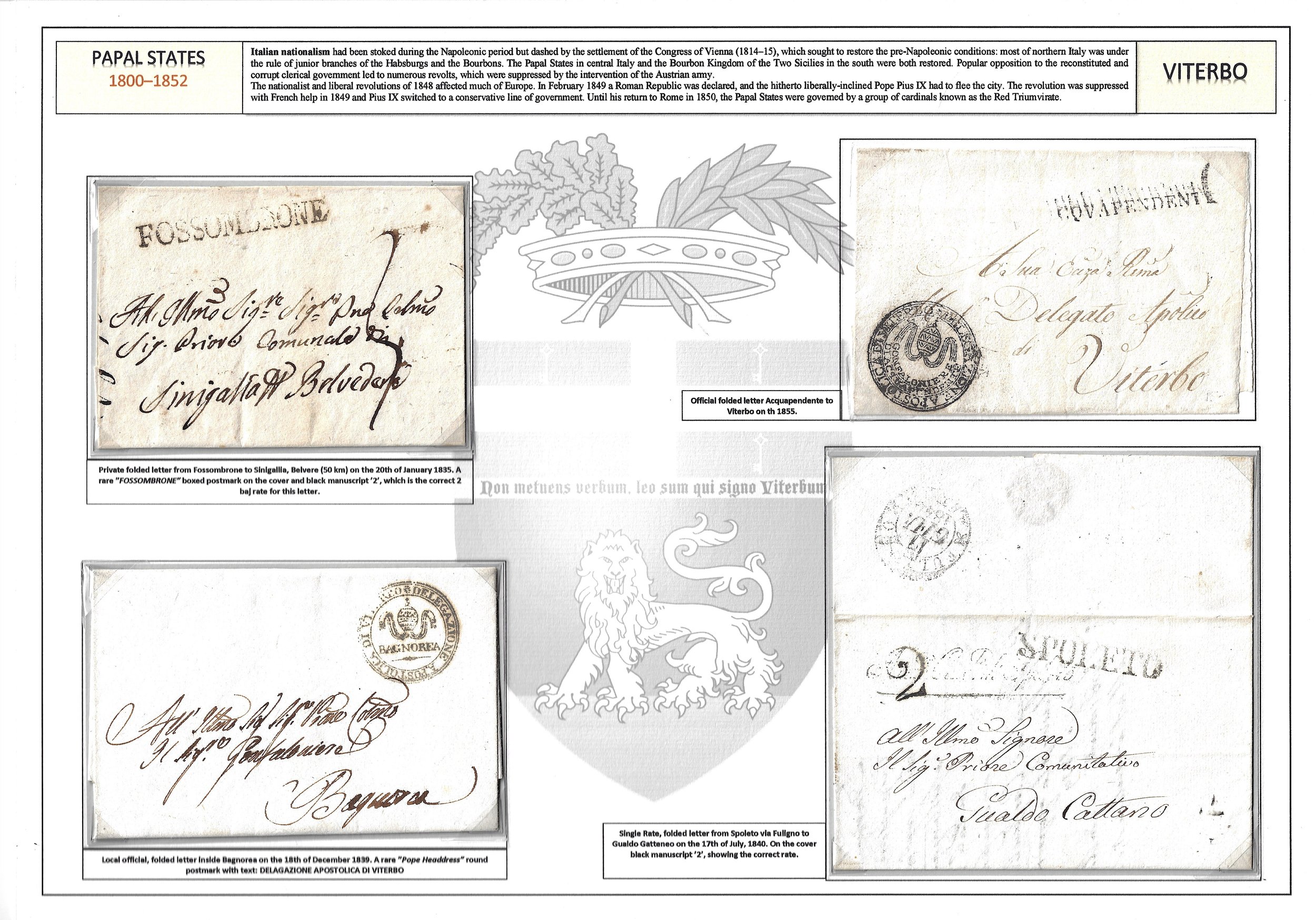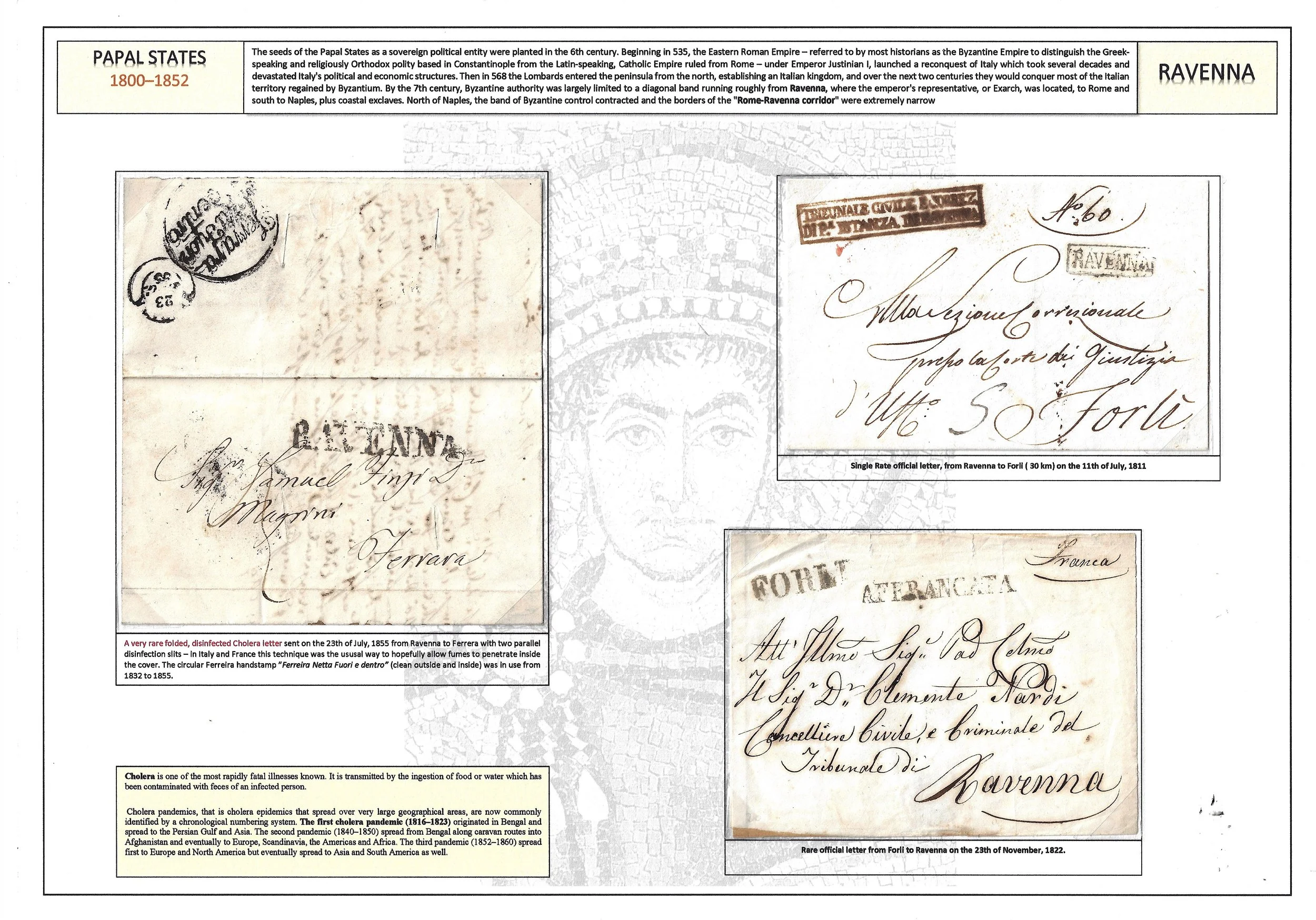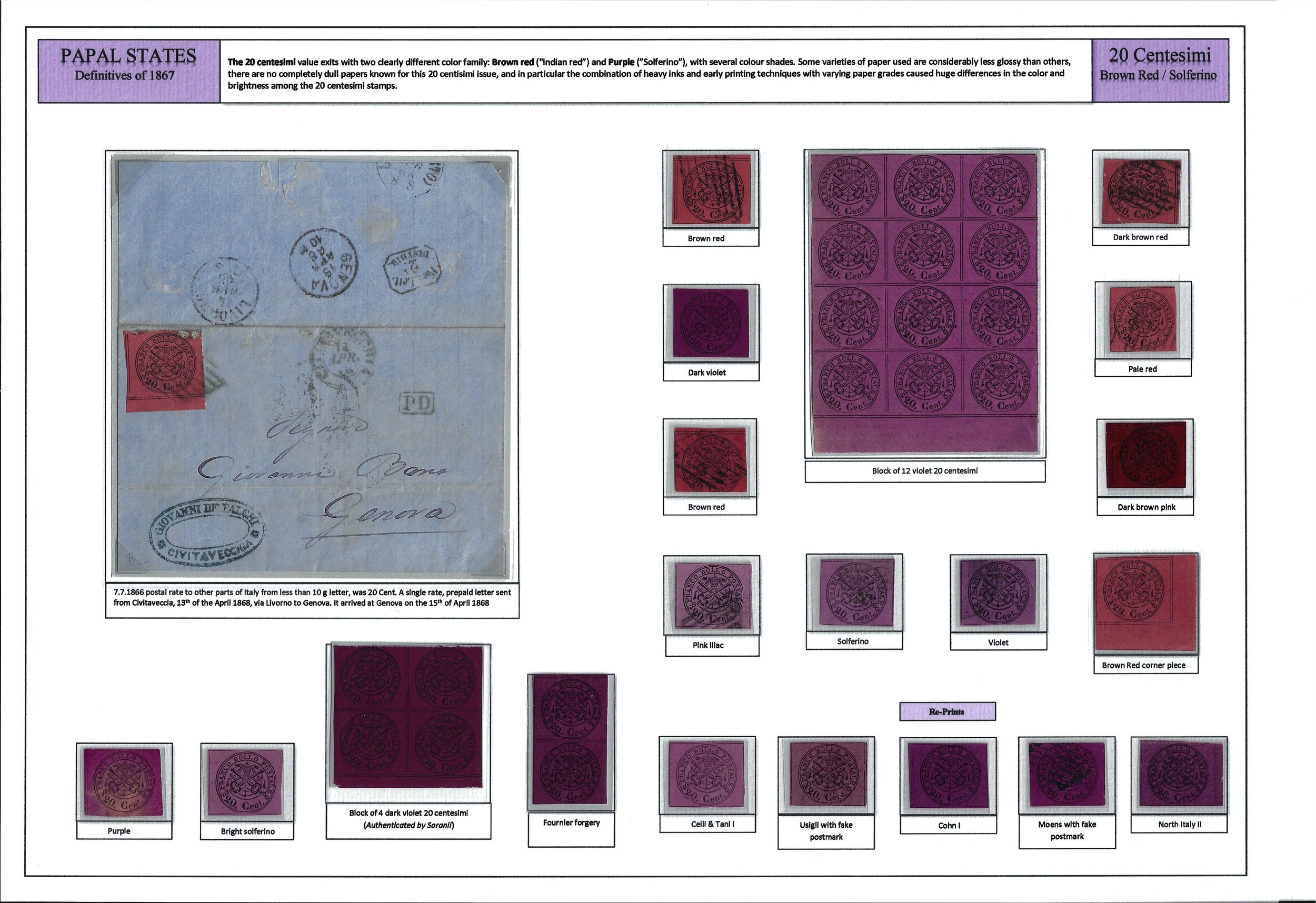Papal States 1852-1870
The Papal States, located in the Italian Peninsula, had their own postal system during the mid-19th century, which operated from 1852 to 1870. This period marked significant changes and challenges for the Papal States postal service, including its start, development, and eventual end.
Start of the Papal States Postal System (1852):
Centralization Efforts: Before 1852, postal services in the Papal States were managed by various local authorities and ecclesiastical organizations. In an attempt to centralize and modernize the postal system, Pope Pius IX established the Papal States' official postal administration in 1852.
Creation of Postage Stamps: As part of this modernization, the Papal States issued its first postage stamps in 1852. These stamps, known as the "Papal States' Coat of Arms" stamps, featured the papal coat of arms and came in various denominations.
Development and Challenges (1852-1870):
Expansion of Services: The Papal States' postal system expanded its services, including the establishment of additional post offices and the introduction of new postal routes. It played a crucial role in facilitating communication within the Papal States and with neighboring regions.
Philatelic Innovations: The Papal States postal system introduced several philatelic innovations, such as the use of postage due stamps for unpaid postage and various stamp issues to commemorate important events or personalities.
Challenges and Political Unrest: The Papal States faced political turmoil during this period. The Italian unification movement, led by figures like Giuseppe Garibaldi and Count Cavour, sought to unify the Italian Peninsula under a single Italian state. The Papal States became a focal point of conflict.
End of the Papal States Postal System (1870):
Capture of Rome (1870): In 1870, Italian forces entered the Papal States and captured Rome, effectively ending the temporal rule of the Papal States and marking the final stages of Italian unification.
Loss of Territory: With the loss of Rome, the Papal States' territory shrank significantly, and the papal administration was confined to Vatican City, a tiny independent enclave within Rome.
Integration into Italian Postal System: The postal services of the former Papal States were integrated into the Italian postal system after 1870. Italian postage stamps began to be used in the region.
Vatican Postal Administration: Vatican City, with its unique status as an independent city-state, continued to have its postal administration. It issued its postage stamps, distinct from those of the Italian postal service.
The period from 1852 to 1870 was a time of both development and upheaval for the Papal States postal system. While it made strides in modernizing its services and philatelic practices, it ultimately succumbed to the political changes and the process of Italian unification. Today, Vatican City's postal service remains a testament to the Papal States' legacy in postal history.
Focus:
The next 40 A3 exhibition pages has the aim to offer a view of the the Papal States postal history, from the introduction of the stamps (1852) to the siege of Rome (1870) – the birth, life, and death.
This collection introduces the issue from the traditional perspective. The following pages will present all the issued stamps of the Papal States during 1852–1870, as well cancellations and their varieties. The exhibit shows also postal rates & routes of the letter mail, rare and unique items, uncommon routings,distant destinations, plate faults, forgeries and reprints. Notable items are highlighted in RED.
This Papal State collection is also one of mine main collection, it includes the years from 1852 to 1870. There are at the moment 80 exhibition pages from these years already made - pages below are A4 size pages. For the exhibition I will change the page size from A4 to A3, and add some other covers, stamps and write deeper information about routes and rates of them.
This collection have been already awarded three times, at first by Large Vermeil in 2021 and lates 2022 by Gold Medal.
Below are pictures from the last exhibition A3 size pages and also old collection pages, which were the material for A3 pages.
I will also add pages from the pre-stamp period starting from 1550 - unfortunately the A3 scans are a little too hard and colorless, but I hope you get an idea of them nonetheless.
EXHIBITION PAGES
Papal States 1852-1870 Collection Pages

